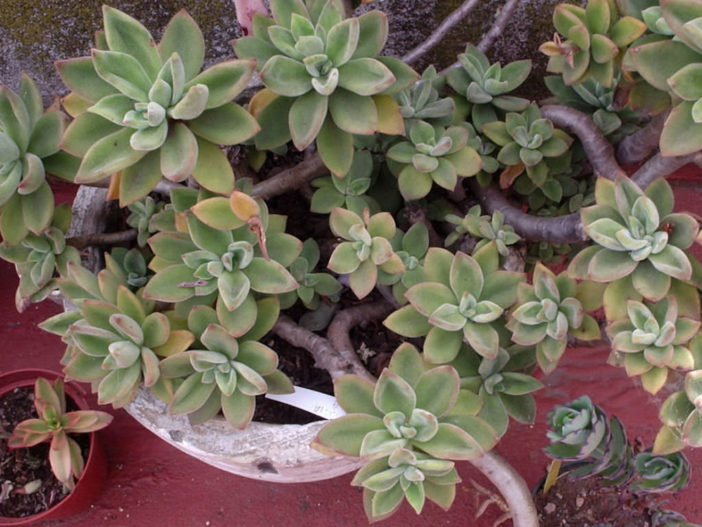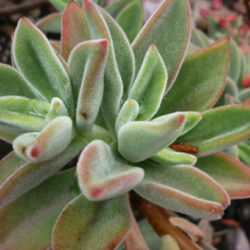Scientific Name
Echeveria 'Pulvicox'
Synonym(s)
Echeveria 'Pulvi-Cox'
Scientific Classification
Family: Crassulaceae
Subfamily: Sempervivoideae
Tribe: Sedeae
Genus: Echeveria
Description
Echeveria 'Pulvicox' is a shrubby succulent plant with branched stems adorned with short, dark brown hairs and fleshy, green leaves covered with silvery hairs and often with a hint of red along the margins. It can grow up to 2 feet (60 cm) tall, with rosettes reaching up to 4 inches (10 cm) in diameter. Typically, the stems carry just a terminal rosette.
The plant produces bell-shaped, reddish-orange flowers on long hairy stems in late winter and spring.
Origin
Echeveria 'Pulvicox' is an old hybrid that results from a cross between Echeveria pulvinata and Echeveria coccinea.

Hardiness
USDA hardiness zone 9a to 11b: from 20 °F (−6.7 °C) to 50 °F (+10 °C).
How to Grow and Care
Most common Echeveria species are not complicated succulents to grow, provided you follow a few basic rules. First, be careful never to let water sit in the rosette as it can cause rot or fungal diseases that will kill the plant. Additionally, remove dead leaves from the bottom of the plant as it grows. These dead leaves provide a haven for pests, and Echeverias are susceptible to mealy bugs. As with all succulents, careful watering habits and plenty of light will help ensure success.
Most Echeveria can be easily propagated from leaf cuttings, although a few are better from seeds or stem cuttings. To propagate a leaf cutting, place the individual leaf in a succulent or cacti mix and cover the dish until the new plant sprouts.
Repot as needed, preferably during the warm season. To repot a succulent, ensure the soil is dry before repotting, then gently remove the pot. Knock away the old soil from the roots, removing any rotted or dead roots. Treat any cuts with a fungicide.
See more at How to Grow and Care for Echeveria.
Links
- Back to genus Echeveria
- Succupedia: Browse succulents by Scientific Name, Common Name, Genus, Family, USDA Hardiness Zone, Origin, or cacti by Genus
Photo Gallery
Click on a photo to see a larger version.


